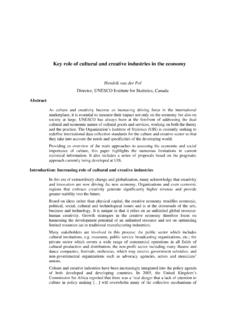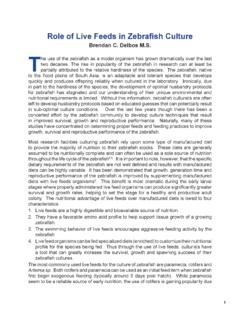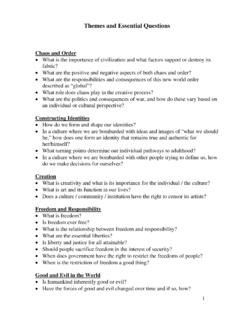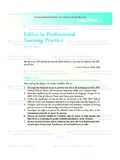Transcription of Culture, Colonization, and Policy Making: Issues in …
1 Page 1 of 9. culture , colonization , and Policy making : Issues in Native American Health Paper presentation for the Symposium on the Politics of Race, culture , and Heath Ithaca College, Nov. 13 14, 2002. Brooke Olson, , Assistant Professor of Anthropology Co Coordinator, Native American Studies Program, Ithaca College (607) 274 1735; Introduction The scope of health problems in Native American is overwhelming as we enter the new millennium. Native Americans are often listed as the sickest minority population in America, with some of the highest rates of diabetes, cancer, substance abuse, suicide, pulmonary disease, and cardiovascular problems (Trafzer & Weiner 2001).
2 To address these health Issues , many policies and interventions have been developed at the national and local level, through agencies such as the Bureau of Indian Affairs and the Indian Health Service. While some of these initiatives have been moderately successful, the rates of diabetes, cancer, and alcoholism in indigenous populations continue to increase throughout North America. Furthermore, focusing on diseases in an individualized health care approach is inadequate for Native Americans whose health and well being is inexorably interwoven with their cultural survival. For this reason, the term cultural wellness is employed as a concept to index the connection between personal health and cultural continuity in indigenous populations.
3 To improve health care, education, and prevention, a larger cultural and historical contextual framework is needed which pays heed to the impact of colonization and its effects on Native peoples. Such a holistic framework evaluates the long term impact of introduced diseases and the cultural trauma caused by the removal of Indians to reservations (Jaimes 1992), the boarding school era (Johansen 2000), and the forced sterilizations of Native women (Carpio 1995; Torpy 1998). Racism and discrimination in mainstream medical systems and American culture continue to impact Native health, but are rarely addressed in wellness programs and health policies.
4 The struggles of Native people to have treaty rights honored for land, hunting, and fishing also have repercussions for health and cultural wellness. It follows that health care policies for Native Americans should also include reparations policies, as Canada has done by setting up a $350 million healing fund for the survivors of the boarding school era (Macqueen 2000). This fund is meant to deal with the emotional, physical, and cultural trauma that came from the sexual and emotional abuse within those institutional contexts purporting to educate Native Americans. In addition to thinking more broadly about health care policies as reparations policies, attention also needs to be given to health programs developed and overseen by Indian people.
5 A review of Native Wellness programs across the country reveals that the most successful intervention and education efforts are those developed and implemented by Native people in local communities (Heath et al. 1987; Macaulay 1997; Olson 2001; Olson 1999). However, lack of economic and political power hinders the efforts of Native Americans to address health and wellness Issues and develop programs. Based on a review of these broad Issues , there are two major areas which need to be considered in order to make substantive improvements in Native American health care and cultural wellness: 1) national Policy making organizations need to develop better understandings of the cultural and historical causes of Native American health problems and address these causes in Policy making and implementation of programs.
6 And 2) grassroots and collaborative initiatives for Native wellness promotion need to be encouraged, especially projects that emanate from Native Americans and incorporate local cultural Issues and sensitivities. The Backdrop of Native American Health Problems: The Establishment of Cultural Risk Through Colonialism and Neo Colonialism Page 2 of 9. The perspectives of anthropology are useful when considering the total context of Native health Issues . Anthropologists typically include in their analyses the frames of history, culture , political economy, and experience, among other viewpoints. When examining Native American individual and cultural sickness, there must be an assessment of the effects of colonization , which entailed massive land loss, genocide, epidemics, racism, and ecocide, or the degradation of Native lands (Grinde & Johansen 1995).
7 While these processes have their roots in the first contact between Europeans and indigenous people, they were intensified in the 1800s with the political, economic, and cultural appropriation of Native life, land, and culture as embodied through Manifest Destiny. Ethnocentric assumptions and stereotypes of Native people were used by non Natives throughout the nineteenth century to remove Indians from their cultural landscapes, confine them on reservations, eviscerate their language and culture through the boarding schools, and, in some instances, simply massacre them to remove them from the steam roller of white progress.
8 In the twentieth century, the Indian Boarding Schools continued, Native lands and cultural practices were still being eroded through state and federal policies, and thousands of Native American women were sterilized without their consent in a eugenics attempt by Indian health care clinics and agencies (Carpio 1995; Jaimes & Halsey 1992; Torpy 1998). Government policies in the twentieth century profoundly compromised the cultural wellness of Native Americans through undermining sovereignty, testing nuclear weapons on the lands of nations such as the Goshutes and Shoshone (LaDuke1999), and relocating Native people for projects such as the Kinzua Dam, which flooded the arable basin of the Allegany Seneca reservation in southern New York in the mid 1960s (Bilharz 1998).
9 All of these processes have had a myriad of effects on the health status of Native Americans through emotional, physical, and cultural trauma. Neo colonialism and ethnocentrism continue today through degradation of Indian lands, political struggles, economic discrimination, and institutionalized racism in education and medicine. This brief assessment should leave little doubt as to why Native Americans are among the sickest and most stressed populations in the As Klyde (1994: 701) summarizes, Why are Native Americans so sick? Suppression of cultural traditions, language, and spirituality, combined with a depressed socioeconomic situation has created an apathy so deeply embedded in the psyche of Native Americans that many attempt to escape reality through alcohol, drugs, or suicide.
10 As evidenced in this discussion, the risks to Native health are historically rooted in colonialism and they persist in neo colonialist attitudes and policies today involving Indian health care and culture . These risks are off set to some degree by the revitalization efforts of the last several decades which have given Indian people a renewed sense of hope for healing the past and the continuity of their cultures in the future. One area of cultural revitalization is health and wellness promotion undertaken by Native people which utilizes cultural foods, practices, and rituals as potent forms of healing today (Olson 2001; 1999).







